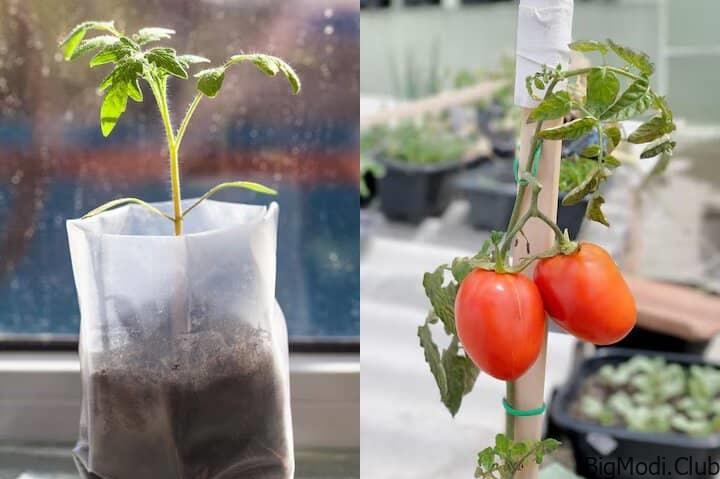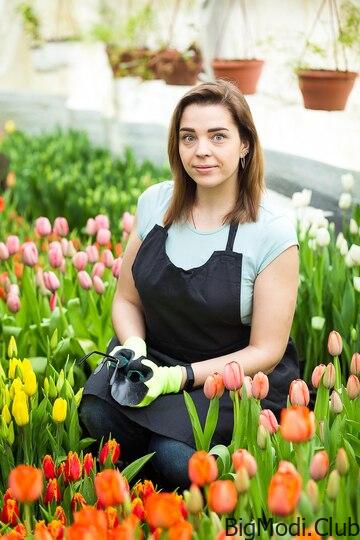If you’re looking to grow tomatoes with ease and efficiency, using grow bags can be a game-changer. How to grow tomatoes in grow bags involves selecting the right bag size and material to support robust plant growth. Fabric grow bags, in particular, offer excellent aeration and drainage, crucial for healthy tomato roots. Whether you’re dealing with determinate or indeterminate varieties, understanding the key steps and tips will help you achieve a thriving tomato garden. This guide provides a comprehensive overview on how to choose the perfect grow bags and successfully cultivate your tomatoes.
How to Grow Tomatoes in Grow Bags
Choosing the Right Grow Bags
When selecting a grow bag for your tomatoes, the choice of material plays a crucial role in your plant’s health and productivity.
Fabric Grow Bags: These are often the best choice due to their breathability, which promotes robust root systems and overall plant health. They also come with sturdy handles, making them easy to move around as needed.
Plastic Grow Bags: While often cheaper, plastic grow bags are not recommended. They lack proper aeration, can become brittle in sunlight, and may lead to root rot or splitting.
DIY Options: If you’re inclined towards DIY projects, you can use woven baskets lined with landscaping fabric, empty feed or birdseed bags, or even compost bags with growing rings. However, these alternatives may not offer the same benefits as commercial fabric grow bags.
Steps for Growing Tomatoes in Grow Bags
Supplies Needed:
- Grow bags
- Potting mix
- Tomato seedlings
- Tomato cages
- Organic fertilizer
- Organic compost
- Mulch (optional)
Planting Process:
- Location: Place your grow bag in a spot that receives at least 8 hours of direct sunlight daily. Avoid placing it on asphalt, as it can cause overheating.
- Filling the Bag: Fill the grow bag halfway with organic potting mix to ensure your tomato plant has enough soil for healthy growth.
- Preparing the Plant: Trim off the bottom set of leaves from your tomato seedling to promote a stronger root system.
- Planting: Place the tomato plant in the grow bag and fill the remaining space up to 2 inches below the bottom set of remaining leaves. This depth helps the plant develop a strong root system.
- Adding Compost: Add a 1-inch layer of organic compost to provide essential nutrients.
- Supporting the Plant: Insert a tomato cage to support the plant and prevent it from toppling over. Be cautious not to pierce the fabric of the bag.
- Mulching: Apply a layer of organic wood chips or straw to help retain moisture and reduce the risk of disease.
- Watering: Water thoroughly, ensuring the soil remains moist but not waterlogged.
Tips for Growing Tomatoes in Grow Bags
- Choosing the Right Variety:
- Determinate Tomatoes: These are preferred for grow bags as they grow in a more compact, bush-like form. They’re less likely to topple over and require less maintenance.
- Indeterminate Tomatoes: These varieties are not ideal for grow bags due to their sprawling nature and need for consistent pruning and support.
- Sunlight: Ensure your grow bags are positioned where they can receive 8 hours of direct sunlight each day to support optimal growth.
- Fertilization: Feed your tomatoes every 2-3 weeks with an organic fertilizer, such as fish emulsion, to support vigorous growth and fruit production.
- Watering: Regular watering is essential, particularly if there’s no rain. During hot weather, consider watering twice a day. Mulch can help retain soil moisture and reduce the frequency of watering.
- Disease Prevention: Prune any branches that come into contact with the soil and avoid watering the foliage to prevent fungal diseases. Use mulch to further minimize the risk of soil-borne diseases.
- Pruning: Regularly remove “suckers” that grow between the main stem and leaf crotches. This helps concentrate the plant’s energy on producing fruit.
How Many Tomato Plants Per Grow Bag
Optimal Planting:
- Single Plant Per Bag: For the best results, plant only one tomato plant per grow bag. This ensures that the plant has ample access to nutrients, water, and space for root development, leading to healthier growth and higher yields.
Reasons for Single Planting:
- Resource Availability: A single plant benefits from undivided access to food, water, and root space, which enhances overall health and productivity.
- Indeterminate Varieties: These varieties, which are typically more productive but require more space, perform better without competition from other plants.
Experimental Observations:
- Overcrowding Issues: Planting four tomato plants in a 25-gallon grow bag resulted in stunted growth, demonstrating that overcrowding can significantly hinder plant development.
What Size Grow Bag for Tomatoes?
Choosing the right size for your tomato grow bag is crucial to ensure healthy plant growth and productivity. Here’s a detailed guide to help you select the perfect grow bag for your tomatoes.
Size of the Grow Bag
Minimum Recommended Size
For optimal tomato growth, it’s essential to use a grow bag with a minimum capacity of 10 gallons. This size provides adequate space for the roots to expand, which is crucial for the overall health of the plant.
Optimal Size
If you want to enhance your tomato plant’s growth even further, consider using larger grow bags. Bags with capacities of 15 or 20 gallons are particularly beneficial. They offer ample space for root development and help retain moisture longer, reducing the frequency of watering. Imagine a 20-gallon grow bag as a spacious, well-furnished home for your tomato roots, where they can grow and thrive without constraints.
Material of the Grow Bag
Best Material
The best grow bags for tomatoes are made from breathable fabric. These fabric grow bags are ideal because they provide superior aeration and drainage compared to plastic or other non-porous materials. Think of fabric grow bags as the difference between living in a well-ventilated room versus a stuffy, confined space. The breathable material prevents root rot by allowing excess water to escape and ensuring that air reaches the roots.
Drainage
Importance
Proper drainage is crucial to prevent waterlogging and root diseases, which can be detrimental to tomato plants. Fabric grow bags naturally excel in this regard, either through built-in drainage holes or the permeability of the fabric itself. This ensures that excess water is efficiently expelled, protecting the roots from potential water-related issues.
Durability
Key Considerations
Since grow bags will be moved and handled frequently, especially when they are filled with soil and mature plants, durability is a key factor. Opt for grow bags that are sturdy and well-constructed. Look for features such as double-stitched seams and reinforced handles, which add strength and longevity to the bags. High-quality fabric grow bags, if maintained properly, can last through several growing seasons, offering long-term value.
Best Tomato Grow Bags Based on Tomato Varieties
Determinate Tomatoes
For determinate tomato varieties, which grow more compactly, a grow bag size of 10 gallons or larger is recommended. Ensure the bag is at least 11 inches high to provide sufficient space for healthy growth. Larger bags are preferable as they support more extensive root development.
Indeterminate Tomatoes
Indeterminate tomatoes, known for their sprawling nature, require more space. A grow bag with a capacity of 20 gallons or more is ideal. These bags should have a minimum depth of 15 inches to accommodate the deep root systems of these plants. Larger grow bags not only support healthier root growth but also contribute to higher yields.
Compact Patio Tomatoes
For compact patio varieties, such as Tiny Tim dwarf cherry tomatoes, Window Box Roma, and Elfin tear-shaped tomatoes, a grow bag size of 3 to 5 gallons is suitable. These smaller grow bags are perfect for smaller, more manageable plants that do not require as much root space.
By choosing the right size and material for your grow bags, you can create an optimal environment for your tomatoes to flourish. Whether you’re growing determinate varieties in smaller bags or indeterminate varieties in larger ones, the right grow bag will make all the difference in your tomato gardening success.
FAQs
Can I Plant Directly into a Bag of Soil?
Yes, you can plant directly into a bag of soil, but there are some important considerations. Ensure the soil bag has good drainage and is suitable for the type of plant you’re growing. For tomatoes, it’s best to use a grow bag or container that allows for proper aeration and drainage, which helps prevent root rot and promotes healthy growth. If using a bag of soil, make sure to provide additional support and aeration to the plant’s root system.
Can I Use Potting Soil for Tomatoes?
Absolutely! Potting soil is an excellent choice for growing tomatoes. It is specifically designed to provide the right balance of drainage, aeration, and moisture retention. Potting soil often contains a mix of compost, peat moss, and perlite, which helps support healthy root development and provides the essential nutrients tomatoes need. Make sure to choose a high-quality potting mix, preferably one that is organic and enriched with compost.
Can I Reuse Tomato Grow Bag Soil?
Reusing soil from tomato grow bags is possible, but it requires some preparation. Tomato plants are prone to soil-borne diseases, so it’s crucial to refresh the soil to prevent disease buildup. Start by removing the old soil from the grow bag and mixing it with fresh compost or new potting soil to rejuvenate its nutrient content. You may also consider sterilizing the soil by baking it in the oven or using other methods to eliminate pathogens. Additionally, rotating crops and avoiding planting tomatoes in the same soil for consecutive seasons can help reduce the risk of disease.


